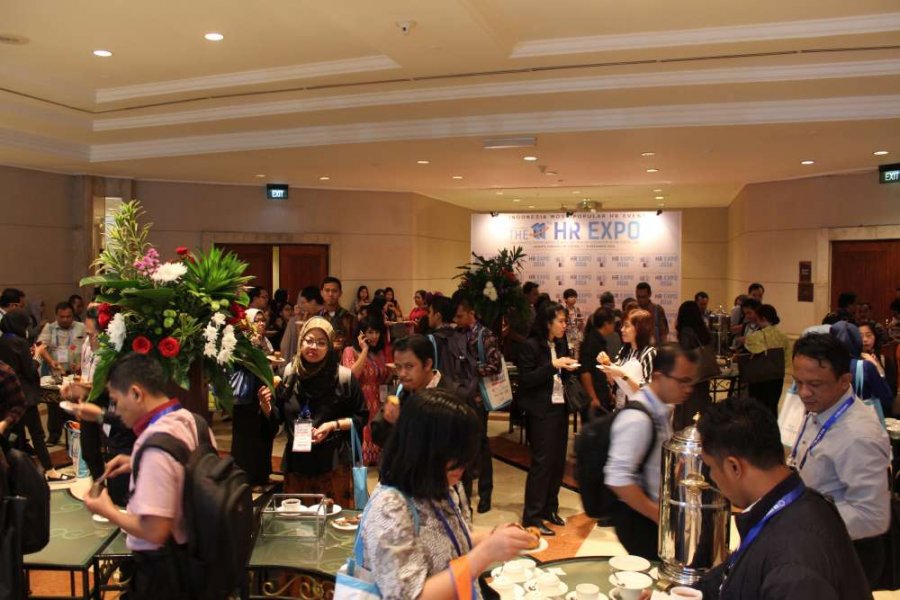Latest News & Insights
Explore the latest trends, tips, and news in HR

Fungsi HRIS dalam Rumah Sakit: Meningkatkan Efisiensi dan Kualitas Pelayanan SDM Kesehatan
Fungsi HRIS dalam Rumah Sakit: Meningkatkan Efisiensi dan Kualitas Pelayanan SDM Kesehatan
Rumah sakit merupakan lembaga pelayanan kesehatan yang memiliki struktur organisasi kompleks dan tenaga kerja yang beragam, mulai dari dokter, perawat, tenaga laboratorium, farmasi, administrasi, hingga staf pendukung. Dengan jumlah pegawai yang besar dan sistem kerja yang berjalan 24 jam, pengelolaan sumber daya manusia menjadi tantangan yang tidak sederhana.Di sinilah Human Resources Information System (HRIS) berperan penting bukan hanya sebagai alat administrasi, tetapi juga sebagai sistem manajemen strategis yang membantu rumah sakit bekerja lebih efisien, akurat, dan terintegrasi.1. Manajemen Data PegawaiSalah satu fungsi utama HRIS adalah menyimpan dan mengelola seluruh data personal,...

How HRIS Gave Energy Company for Change
Previously we already know what HRIS and company profits if using HRIS. Now, let's know how HRIS is able to energize the company to change.A good HR department is critical to an employee-oriented, productive workplace in which employees are energized and engaged. Here are the reasons why:HR monitors the culture.HR owns the overall talent management processes. In conjunction with other managers, HR leads the way in management development, performance management, succession planning, career paths, and other aspects of talent management.HR is responsible for the over-all recruiting of a superior workforce.HR recommends market-based salaries and develops an overall strategic compensation plan.HR researches, recommends, and implements employee benefits programs that attract and retain your best employees.HR is responsible for recommending and instituting strategies for people and the organization that further the attainment of the organization's strategic goals.HR makes sure that workplace activities, events, celebrations, ceremonies, field trips, and team building opportunities are occurring.HR advocates for employees who have issues or conflict with management and coaches managers and executives who seek a more effective approach to working with particular employees.If your organization is changing direction, developing new products, changing mission, vision, or goals, HR must lead the way with employee programs and processes.Not everyone loves each other but they need to develop effective working relationships for contributions and productivity. HR can help by knowing the players and taking on the necessary role of advocate, coach and/or mediator.So, HR is not just about daily operational tasks, let operational tasks be handled by HRIS and let him help HR to monitor and help the company move forward.The importance of HR is easily overlooked in the busy day-to-day in the workplace, but without contributions in each of these areas, the organization would be less successful.

Performance Management System: Does IT Need Redesigning?
The author critically evaluates the existing performance management system in organizations. Read on to know if it requires redesigning.It is generally held belief that most employees are disinterested in the appraisal process. Even many managers are reluctant evaluating their subordinates but they act as an appraiser just for the sake of completing the appraisal process as mandated by the organization. In such scenario, what an organization can do in order to bring back the belief of the employees in the performance management process and create a friendly workplace? Does it make sense to abolish the performance appraisal system or the system needs an improvement and redesign?Issues with existing Performance Management SystemsPerformance appraisal is a process that evaluates the employees and informs them how well they have progressed toward achieving the set objectives for the said review period. Though the goals and performance measures are mutually agreed upon by the appraiser and appraisee, it's often seen that it's the manager who sets the goals based on the organization's need and tries to align the individual's goal with those. Sometimes, it so happens that an individual wants to achieve something different like learning new skill, getting involved in other work related projects which can improve analytical and leadership skills etc. along with the job but the performance management system doesn't allow to set such type of goals either because the manager doesn't think individual goals as important or due to system constraints.Another issue with the performance management systems in most of the organization is that they try to quantify the qualitative attributes or the subjective items. For e.g., how can an integer rating out of options 1 to 5 be given to any skill? Another issue which is commonly seen is that performance management system doesn't align with the objective of the organization and considers the holistic development of its employees rather it has become a tool for criticism and is done only for the sake of doing it. Most of the organizations use bell curve in performance appraisals which compel the appraiser to use a forced rating instead of a fair one. This method is too rigid and may lead to loss of morale among employees. At times, managers also show disinterest in the appraisal process and find themselves in a fix at the time of giving final ratings to the subordinates. All such issues create conflict between the manager and employee and bring dissatisfaction which ultimately affects the work culture of the organization.Developing an effective but friendly Performance Management SystemsIt's very important to develop an effective but a friendly performance management system. Organizational heads should consider aligning the performance management system with the organizational goals. They should develop such appraisal process which not just identifies the top performers but also bring the low performing employees to average and above average level so that overall development of the individual and hence organization can take place.Creating a culture where employees are not scared of the performance appraisal but seek it as a way to improve and learn and hence contribute towards the organizational goal should be created. Companies like Infosys, Microsoft and Cisco have already stopped using bell curve methodology in performance appraisal system and it has shown a sign of relief among the employees and hence towards the productivity. A similar approach can be taken by other organization to boost up the employee morale which has lowered down due to the use of bell curve. It is also important to make managers trained about the different aspects of performance management and guide them in the case of any issues. Companies can leverage 360-degree feedback system for the appraisal which creates a win-win situation for employees, managers, and customers and helps to bring the confidence in the appraisal process. If the performance management system is robust which helps in learning and overall development of an individual, it will increase the job satisfaction levels and thereby decrease the attrition rate.The way aheadIt's very important for an organization to understand the objective of performance management system and design the performance management system which is based on the needs of different departments within the company. Organizations should try to create an environment which enables learning and provides a platform to employees to showcase their skills so that their work can be appreciated and rewarded. Performance appraisal system should not be a way to criticize but it should aim at the continuous improvement of the employee. It should also try to capture the work related preferences of an employee and how best those be mapped with the objectives of the business unit and the organization. Appraisal process in various organizations is changing due to different business needs and human resource constraints which should be taken receptively by all the stakeholders and hence there appears a need to realign and update policies and processes in an organization to create an effective and friendly work environment and thus happy and satisfied workforce.Peoplematters

What is Hris? Why You Need Hris for Your Business?
A HRIS, or Human Resource Information System, is a software solution for businesses with a computer based application for assembling, processing and help automate data related to the human resource department (HRD) function.As in other types of information systems, an HRIS consists of a database, which contains one or more files in which the data relevant to the system are maintained, and a database management system, which provides the means by which users of the system access and utilize these data. The HRIS thus contains tools that allow users to input new data and edit existing data; in addition, such programs provide users with the opportunity to select from an array of predefined reports that may either be printed or displayed on a monitor. Reports may address any of a number of different HRD issues (such, succession planning, compensation planning, equal employment opportunity monitoring). HRISs also generally include tools by which users or system administrators may generate ad hoc reports and select specific cases or subsets of cases for display.A HRIS generally should provide the capability to more effectively plan, control and manage HR costs; achieve improved efficiency and quality in HR decision making; improve employee and managerial productivity and effectiveness.Such as Orange HR Solution, HRD function not only about input data and payroll. Orange HR Solution allows companies to manage and maximizing workforce potential amidst tough business competition, this can give back hours of the HR administrator's day previously spent attending to routine employee requests.With designed fully integrated that allowing employees to access and manage their personal data, a comprehensive array of features, designed in modular which is the essential modules can be selected based on the specific situations. HRIS offers other options to help companies understand and fully utilize their workforce's collective skills, talents, and experiences.Selecting the right HRIS is important. Your company will need to make sure that they can customize the system to meet its specific and unique needs and that it is a system that will grow with your company.

Being productive at work: Avoiding disturbances
One of the top productivity excuses I hear in the workplace is... people keep interrupting me. After all, I could get my stuff done if others weren't constantly disturbing me.What do you do when co-workers are preventing you from getting things done?Excuse Me, I'm Working Here...One of the top cited sources of non-productivity in the workplace is interruptions.Disorganized and noisy workplaces don't make for productive teams.In the name of teamwork, cost-savings, and openness, companies setup workspaces that actually encourage interruptions."Many companies set themselves up for failure by creating work environments that are counter-productive. Small cubicles, open meeting rooms, a limited offices may provide a team-like atmosphere...But, they don't lead to completed work or productive workers."Despite good intentions of team-friendly environments, many companies end up with chaos looking like a battle-scene from the movie Braveheart. A survey by Sapience Analytics, a Pune-based technology firm, has found out that every 11th minute, you are disrupted by either a ping on your chat window, a beep on your Smartphone or a message alert? And to add to this, it takes a good 25 minutes before you return to your workstation.We all are a creature of habits. But it is how we want to manage and tame our insane habits make the difference. Any habit that causes a definite disturbance around us should be controlled. Let me elaborate a bit. Have you ever found a co-worker of yours who has an uncanny habit to chit chat informally at least 3 times a day by suddenly gushing in your workstation? Or do you have your colleagues who often come to your desk asking you to accompany them for a short break? We all certainly have our friends who fall under this category of habitual disturbance creation. Every employee has his or her own distinctive personality. Handling them seems easy at one go, but gradually it becomes a tough row to hoe to handle their growing need of breaks and chit chats, especially when you have an urgent deadline to meet. How do you handle them?Here are five simple yet practical and effective tips which will help you handle unwanted chit chats in your office.1. Quite zoneTag your desk as 'Quite Zone' for a fixed time, especially the days when you have an urgent deliverable to meet. Be rigid and firm not to entertain anyone during these hours. Slowly, people around you will start respecting you for your dedication or others will unwillingly stop chasing you for their breaks and chit chats.In fact, there are organization's who allocates "Quiet zone" for their employees. These are spaces that help you to think and get your things done. It is important to provide quiet zones that allow normal office activity and are not overly disruptive.2. Lead by exampleHelp other employees to get over this problem by leading with example. In fact, this can have a positive effect on the overall culture of the organization. Imagine, a dedicated quite zone in the office where everyone is engrossed in their task gives a sense of pride and no doubt an increased productivity. This enables you to contribute to your organization in accelerating business results by inspiring others. 3. The tricky oneApart from sincerely trying hard, there will still remain a good number of species who will continue to carry the baton forward. Next time when they come up to you to interrupt your work, then simply ask him or her to help you out with your work which will help you in completing your task quicker. Though you would actually not want them to help you, this will definitely fetch what you have been looking for. There are extremely low chances of them to come back to your desk when they see you working next time.4. Fear of relationshipWe spend minimum 9 hours in our office and of course have colleagues who become good friends. The thought of losing them is the most common fear one has in her or his mind. Getting the message across to them straight becomes tricky. In this situation, you can use another way of politely deferring the discussion. Pick up a topic that your chit chat friend is disinterested. For instance, if she likes discussing movies, you pick up some information on Animal Planet or historical documentary films. Just try to talk about things which are completely different from what she generally talks about. This will make them stop hanging around with you for long hours and slowly they will just hang around for some time and excuse themselves from there.5. Stay awayThere are many of our colleagues who are smart enough to complete their assigned task and then come to you for chit-chats when you are seen to be busy in work. They generally are devoid of any interest in helping others to complete their respective works. Therefore, at the end of the day, you are reprimanded for not finishing your task on time and the other guy is a happy go lucky one smiling all the time because his work is all done. The golden rule to this is to simply stay away from such people who do not value other's time.ConclusionIf you wish to earn the title of a gossip king or queen, then it is okay to carry with whatever is happening around you. But if you want to be known as someone responsible, then it's time to act now. It is always said that prevention is better than cure. Rather than enjoying it and facing the consequences when it grows bitter, you must cut out the office chit chat right away. Let us stop as well as protect ourselves from these annoying workplace interruptions and help make the best of every minute.Source: Peoplematter

Want to stay fit and enjoy your work? Tricks from an Athlete
The biggest risk a football player faces is injured knees. Many rising careers in the sport have been cut short due to kneecap or ACL injuries. Tennis players face the risk of injury and permanent damage in the arm joints. Weightlifters and racecar drivers face the risk of horribly degenerated vertebral discs post their active sports career. However, athletes are not the only ones who worry about leading a fit and healthy life, everyone else does too. That's probably the reason why anti-ageing products and services fetched $282 billion around the world in 2015, and are expected to cross $330 billion by 2020.Lifespan vs. healthspanA study has found that lack of exercise is one of the major causes of chronic ailments in the human body. On the field, a sports person uses cardiovascular, respiratory, neuromuscular, and cognitive systems of the body individually as well as a system. As a result, athletes are the most ideal candidates to test the optimal working conditions for the mind, the body, and their interdependence. Take the example of 85-year old Hiroo Tanaka of Japan who clocked 15.19 seconds in 100-meter sprint at the World Masters Athletes on July 31, 2016. Instead of experiencing a peak in physical performance in their 30s and an inexorable decline thereafter, athletes like Tanaka who maintain an active lifestyle are also able to maintain their close to peak performance for a longer period than average people.So, what can you do?Movement is the only medicine you need. Physical activity improves the function of the body and brain, reducing the risks associated with a sedentary lifestyle like cardiovascular disease, metabolic and psychological disorders, anxiety and stress, and helps improve cognitive functioning. However, if you're still not clear about how that works for you, here are a few tips from athletes that can help you improve your healthspan, and ultimately, your productivity.Regular exercise is the keyThere really is no substitute for regular exercise. Not only does it help you stay physically active, regular workout is an excellent way to relieve stress and stay positive at all times. Athletes enjoy their workout. It's not about being excited for running or lifting weights, it's about valuing their fitness over everything else.Stay in the company of active peopleFitness isn't just about what you eat, it also has a lot to do with who you eat with. Athletes prefer the company of likeminded people who prefer to hiking or ride a bike instead of sitting at a restaurant eating fast food.Don't worry about eating right all the timeAthletes never go on a diet. Not only that, they allow themselves at least one cheat-day once in a while. For them, it's all about balance in life. The cheat-day helps ensure that the balance between fitness and sanity remains intact and nothing comes in the way of that.Take a weekly break from workoutsAthletes are acutely aware of their body's need to rest, and they never feel guilty about allowing themselves to do that. They ensure that they get plenty of rest, and even take a weekly day off from their regular workout to ensure that it happens as planned.In conclusionAthletes aren't made of something different than the rest of us. The only difference between an athlete and others is that they possess the willpower and the motivation to prioritize their fitness over everything else. Everyone gets old, even the athletes, but this motivation is what ultimately shows in their performance, and offers the rest of us a few lessons in staying fit and enjoy our work to the fullest.Source: People Matters

Rewriting The Rules for Digital HR
While none of the HR's prior responsibilities has gone away, HR departments today are under pressure to rewrite the rules by redesigning talent practices, from recruiting to leadership to performance management; by experimenting with digital apps; and by building a compelling employee experience. All this must be done with a focus on redesigning the organization around teams, implementing analytics and organizational network analysis, and driving a global focus on diversity, culture, learning, and careers.Digital HR is built on innovation and experimentation. As companies become networks and the employee base becomes both older and younger, new approaches are needed in almost every HR domain. Companies often now use hackathons, rapid design groups, and both prototypes and "minimally viable products" to roll out pilot HR programs.Design thinking has gone mainstream. Rather than deliver HR programs designed around legacy business processes, HR teams now study employee needs across all segments: hourly workers, salaried employees, managers, executives. Instead of traditional career models, HR is offering journey maps and replacing complex processes with local practices based on an integrated platform. (See the Ford case study in the "Employee experience" chapter of this report.)Digital HR requires digital technology expertise. While cloud-based HR systems brought tremendous value to organizations, they are no longer enough. Today, HR teams are rethinking their solutions in the context of workflow-embedded apps; Royal Bank of Canada, Deutsche Telekom, Ford, and others now have digital design teams within the HR department. This means using the cloud as a "platform" and building on it for company-specific needs.The vendor market is reinventing itself: A new breed of HR products and solutions is coming to market, many built around mobile apps, AI, and consumer-like experiences. These tools are enabling HR to become near-real time. As digital HR takes hold and HR organizations become more platform based, business partners are becoming more digitally empowered and able to spend more time in the business.Where companies can startRedefine your mission: HR today must define its role as the team that helps management and employees rapidly transform and adapt to the digital way of thinking. Familiarize yourself with networked organization structures, organizational network analysis, and digital leadership models.Upgrade core technology: Replace legacy systems with an integrated cloud platform for a sound digital infrastructure. Upgrade old tools for learning, recruiting, and performance management, and bring in systems that are easy for employees to use.Develop a multiyear HR technology strategy: In today's rapidly changing HR technology world, it's important to build a multiyear strategy that includes cloud enterprise resource planning (ERP) platforms, apps, analytics, and a range of tools for AI, case management, and other solutions.Build a digital HR team: Dedicate teams to explore new vendor solutions and build others, and consider AI solutions to improve service delivery, recruiting, and learning.Organize HR into networks of expertise with strong business partners: Rethink your HR organization model to focus efforts on the employee experience, analytics, culture, and the new world of learning. Make sure these teams communicate well: High-performing HR teams share leading practices and know what the other teams are doing.Make innovation a core strategy within HR: Push your self to reinvent and innovate in every people practice. Many organizations are now using new performance management practices built around design sessions. Investigate new innovations in recruiting, including using data to find people who resemble high performers in the company.Rotate younger people into the HR profession: Regularly rotate people from the business into and out of HR, use innovation teams to reverse-mentor senior leaders, and recruit new MBAs to bring people with analytics skills into the profession.Benchmark: Visit other companies to see what they are doing. HR teams can bring in outside speakers, join research membership programs, and continually look for new ideas to foster innovation. Today's leading practices come from innovative ideas developed around an organization's culture and business needs, not a book.Further, the HR platform and HR operations center have been designed and built using an agile approach that included multiple releases of both the systems and operations center. This agile approach has enabled the HR process, policy, HR IT, and business teams to learn and build capabilities in the new digital HR environment.

Digital Transformation of HR
The world of work is undergoing a seismic shift. Technology is changing the way we work, communicate, relate and above all the way we liveDigital HR is the foundation for organizational transformation to make it future ready. Digital HR is the technology enabled a way of work that leverages new age sciences to make HR transactions and decisions intuitive, informed and inspiring to enable organizational effectiveness. It is an integration that embeds HR activities with business on a real time and real impact basis.Understanding and embracing Digital HR will lead to a lot of HR aspects getting embedded in everyday work and businesses. The digital HR team can then spend more time on strategic initiatives, guided by insights and achieve higher workforce effectiveness. This will the enable measurement and monetization of all the value that HR has always promised to deliver but has often failed to display. "Go digital or perish" is the survival mantra for HRFor HR, the digital transformation doesn't just imply "digitally" doing HR tasks. It carries the potential of a new discourse about employee learning, satisfaction, and performance. Nurturing this discourse can be transformational for the entire organization, for the role of HR, and have a profound influence on culture and even well-being at the company.HR is undergoing rapid and profound change. Once viewed as a support function that delivered employee services, HR is now being asked to help lead the digital transformation sweeping organizations worldwide. We see this change taking place in three areas:Digital workforce: How can organizations drive new management practices (which we call "digital DNA", a culture of innovation and sharing, and a set of talent practices that facilitate a new network-based organization?Digital workplace: How can organizations design a working environment that enables productivity; uses modern communication tools (such as Slack, Workplace by Facebook, Microsoft Teams, and many others); and promotes engagement, wellness, and a sense of purpose?Digital HR: How can organizations change the HR function itself to operate in a digital way, use digital tools and apps to deliver solutions, and continuously experiment and innovate?Over the last five years, the HR discipline has undergone a rapid evolution. Three years ago, we wrote about HR's "race to the cloud," as companies rushed to replace legacy talent systems with integrated HR platforms.Two years ago, we characterized HR as a function "in need of a makeover," as companies focused on reskilling HR professionals, integrating the organization, and implementing analytics.Now, as digital management practices and agile organization design become central to business thinking, HR is changing again, focusing on people, work, and platforms. We call the resulting set of HR practices "digital HR."Digital HR builds upon years of effort. In the 1960s and 1970s, HR focused on personnel operations, automating transactions, and maintaining a sound employee system of record. In the 1980s, HR was redesigned as a "service organization"; centers of expertise began to manage core talent practices, service centers handled individual needs, and HR business partners began to be embedded in the business. In the 1990s and early 2000s, HR was redesigned again around integrated talent management, often accompanied by the implementation of new systems for recruiting, learning, performance management, and compensation.Today, HR's focus has shifted toward building the organization of the future. Companies are hiring young, digitally savvy workers who are comfortable doing things themselves and sharing information in a transparent way. They want an integrated, digital experience at work-one designed around teams, productivity, and empowerment-and HR is expected to deliver it.

Strategies for Implementing HR in The Cloud
More and more companies are relying on cloud solutions to handle their data. Storing your company's information can improve company-wide communication since it provides your employees with ease of access, flexibility, and quicker response times. Among the other benefits of cloud-based solutions are the automation of data-heavy processes and the ease of ensuring HR compliance.Before you decide on implementing cloud solutions for your HR department, there are a few things you should take into consideration first.Learn About Cloud ComputingBefore implementing these changes, it might be a good idea to learn some of the basics of business cloud management. While it may seem pretty straightforward, a little research never hurt. It's going to help you get a clearer picture of what it involves, and how you can benefit from it.It can also lead you to new ways in which you can make your company more efficient. The whole point of a cloud is to keep all of your information in one place that is easy to access. While these changes are best done one step at a time, eventually you'll want to bring your whole company in alignment. Learning about cloud computing can help you prepare a long-term plan while keeping track of all the steps necessary to put that plan into action.Consider ImplementationYou need to consider a number of factors when looking for the best solution for your company. Once you've decided, before implementing the upgrade, you need to plan out how you are going to do it.There are two basic ways you can go about implementing these changes. In the beginning, you may want to implement just core HR application, and only later expand. Or, you can go all in, by applying cloud-based solutions across the board.Either way, you'll have to consider long-term plans for implementation. Even if you stick to just core functionality, eventually you'll want to upgrade.The slow and steady approach allows your personnel to adjust to the change and lets you see where there is a need for improvement. It can help you adapt in preparation for the larger switch.Alternatively, if you adopt a complete suite cloud-based of HR management systems, you can ensure that there is a uniformity between these solutions and that they are all optimized for maximum efficiency. It can also give you the chance of testing out these functionalities together.Consult With Your Cloud ProviderIf you have a somewhat clear picture of what you want, you can ask your vendor what the optimal solution for your business would be. Cloud service providers offer a wide range of solutions, which can be adapted to suit your company's needs.You must also make sure to ask your cloud provider about their data protection policies. Make sure you understand what measures they are taking to ensure that the data stored in the cloud is safe.Find out what security measures must be taken at the level of the end user as well. While your provider has an obligation to protect your data in the cloud, there's not much they can do about how the users decide to handle to it. Ask if there is any level of data encryption. That's one way to ensure that information doesn't get leaked during transfers, or when it's accessed remotely, via possibly unsafe connections.Make Sure Everyone Is Ready for the ChangeEven though cloud computing is quite accessible and pretty straight forward, your employees still need at least some degree of familiarity with how it works. There's a growing concern that the biggest challenge cloud computing will have to face in the near future is a lack of expertise.Provide your employees at least with some basic training, and be prepared for a short period of adjustment. This means you'll have to set aside some time until the software changes can be used to their fullest.This is partly why the sooner you start applying cloud solutions to your department, the better it's going to be in the long run. As these SaaS options will continue to expand and evolve, learning them from scratch is going to be more and more difficult. This means it's going to be harder to find people with who can take advantage of them, and it's going to take longer to train your employees.The sooner they can get familiarized with the basics, the easier it's going to be further down the line to continue upgrading, and implementing cutting edge solutions.Keep Updated on Current Regulations and LegislationBecause technology is evolving at such an astounding rate, data protection laws are still somewhat lagging behind. As such, there are no worldwide legislative frameworks in place.When implementing these solutions, it is essential that you learn about the regulations that apply to your country and region. And it is equally important to learn those of the countries or regions you will be dealing with. Data protection laws differ quite a lot from state to state, and you need to know exactly what you can, and cannot do when it comes to data transference.Cloud computing is quickly becoming the worldwide norm when it comes to handling business data. It's a reliable way of storing and securing large amounts of information, while still keeping it accessible. Changes and new technological developments are to be expected, so the sooner you jump on board, the better it's going to be in the long run.To get the benefits of a new, cloud-based HR management system, select an implementation strategy based on HR goals and strategic business objectives.Adoption of cloud-based human resources systems is one of the biggest trends in HR management. According to a global survey conducted by Information Services Group in February 2014, 37 percent of respondents said their companies have implemented a SaaS-based HR management system and another 21 percent plan to replace their current HR system with a cloud-based solution in the next two years. In many cases, companies are moving to cloud-based HR systems as part of a broader HR transformation effort; they're deploying these new solutions to help enhance strategic alignment with the business, bolster talent acquisition and retention, and support business process improvementsYet even as many organizations put HR systems in the cloud, they face challenges attaining anticipated benefits from those systems. Notably, HR organizations' ability to improve processes, business alignment, and recruiting and talent management initiatives often depend on the implementation strategy they employ, according to Michael Gretczko, a principal with Deloitte Consulting LLP's Human Capital practice. "Even though SaaS applications are relatively easy to put in place, and have extensive out-of-the-box functionality, simplified configuration features, and well-established practices to guide their effective use, organizations still need to choose an implementation strategy that suits their HR goals and business objectives," he says.Choosing an implementation strategy can also help HR leaders plan and sell a SaaS deployment to the broader enterprise. Gretczko says many HR leaders ask about the best way to implement SaaS and use it to meet business objectives. "They wonder how they can maximize their investment, and what steps they should take to promote widespread adoption of the new system," he adds.SaaS HR management systems are enabling HR transformations at many global businesses. By starting with the forces driving a company's HR transformation, HR and IT leaders can better select the appropriate implementation strategy for their business. Says Gretczko: "Doing so ought to bring clarity and focus to the deployment effort, and also help position companies to achieve strategic HR goals."

Orange HR Solution at HR Expo 2016
Jakarta, December 9, 2016 - Orange HR Solution attended exhibition held by Intipesan at the Jakarta Convention Center on 7-8 December 2016. HR EXPO is a showcase summit for HR Practitioners Indonesia held annually in December. This event became the center of the development of human resources management knowledge in Indonesia, so it has a positive contribution to the development of human resource management practices in Indonesia.Activities are held at HR Expo includes seminars on the issue - the actual issues surrounding the Human Resources and Exhibition for services and goods related to the HR industry such as; HR Consultant, Training Providers, Educational Book Publishing HR and so on.Orange as HR solutions must always provide solutions tailored to the needs of HR and problems faced. For example, by supplying applications that can be used by employees.
Subscribe to Our Newsletter
Get tips, trends, and insights delivered straight to your inbox.